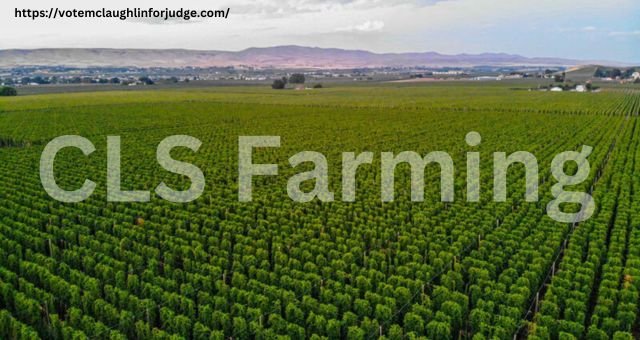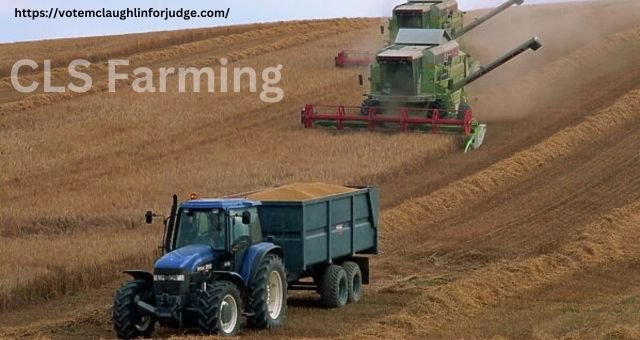
CLS Farming: Enhance Your Productivity
CLS farming is an approach to climate smart farming. It aims at transforming and orientating agricultural systems to support food security and the climate changing conditions. Moreover, you might want to know more about this innovative farming system. Right? Well, in this blog, you will be provided with all the relevant and complete information related to this topic. You just need to stick around with this blog till the end of the discussion. This blog is all about CLS Farming.
About CLS Farming
CLS Farming is a holistic approach that goes through various types of practices as well as techniques that are tailored to different agricultural systems. It mainly focuses on:
Water management – The efficient water is used through drip irrigation, rain water harvesting and soil moisture management. This ensures that the crops receive sufficient water without any wastage.
Sustainable land management– Practices like aggro forestry, crop rotation and conservation helps to improve the health of the soil, enhance diversity as well as increase resilience to climate shocks.
Croup and livestock diversification– this means introducing a variety of crops and species that reduces risk and improves resilience. Dynamic systems are not very much vulnerable to pests, disease, and extreme weather conditions.
Enhanced crop varieties and species – development and planting drought resistant, heat resistant as well as flood tolerant varieties of crops and breeds that are more resilient to climate changes.
Renewable energy – the use of solar, wind and energy to reduce dependence on fuels farming operations.
Efficient use includes– reducing the dependence on synthetic fertilisers and pesticides while using organic elements and using precise agricultural techniques that optimise input use.
Main features of CLS Farming
Agroforestry – Integrating trees and shrubs into cultural landscape to improve soil fertility, reduce soil Rohan and provide additional income through fruit, timber and other products.
Integrated pest management– Refers to combining biological, cultural, mechanical as well as chemical tools to manage best in an economy and eco-friendly manner.
Conservation agriculture– the practices like cover cropping maintain soil structure and health, enhance water retention as well as contribute in the reduction of soil erosion.
Soil health management– practices such as cover coping, crop rotation and organic commandments improve the health of the soil and fertility.
Precision agriculture – this refers to using technology to monitor and optimise agriculture input such as water, past sides as well as fertilisers to increase efficiency and reduce the impact of the environment.
Sustainable livestock management- the practices such as improved feed quality, rotational grazing and manual management reduce the greenhouse emissions and enhance the productivity of the crops.
Benefits of CLS Farming
Increased resilience- By improving the health of the soil, water management and incorporating biodiversity, the fields are better equipped to withstand climate conditions such as floods, storms as well as droughts.
Economic benefits – the efficient use of resources and specification of income sources reduce the cost and increase profit for farmers.
Enhanced productivity- CLS Farming practices lead to higher growth and more stable production, which also improves food security and the income of the farmers.
Mitigation of climate change– the practices like conservation tillage, agroforestry, and improved manual management reduces carbon in soil and biomass which reduce overall greenhouse gas emissions.
Environmental protection – The reduced chemical input and improved health of the soil contribute to a healthy ecosystem and biodiversity.
Challenges of CLS Farming
Financial constraint- The investment in CLS farming and practices can be costly which might be a barrier for smallholder farmers.
Knowledge and Training– Farmers need access to knowledge and training on this practices which require extension services and several education programs.
Policy and institutional support – the effective implementation requires incentives, supportive policies as well as institutional frameworks at local national and global levels.
Access to markets – the farmers need access to market to sell their diverse crops at fair prices, this may require improvements in infrastructure and market system as well.
Climate forecasting– unalienable climate data is essential for farmers to make informed decisions which require suitable investment and material logical services and data dissemination.
Future directions
Policy support – The government needs to create environment friendly policies that promote CLS farming and provide financial incentive to support formal education and training.
Research and development- A proper research and development is essential to create new practices and technologies that are effective under different climate conditions.
Collaboration- Collaboration among research, farmers, policy makers and the private sector is very essential for the successful implementation of this farming system.
Sustainable finance– The development of innovative financing mechanisms like green loans and climate bonds can be helpful for the farmers to invest in such farming practices.

Final words
In brief, CLS Farming is a great farming technique and practices that can be used to enhance the productivity of the farming. This also improves the quality of the soil and reduces soil erosion. Not only this, it allows you to enhance the quality of your crops which will provide you a reliable place in the market. Tell us your thoughts on this in the comments section. See you later in the next blog. Further, if you still have any questions or suggestions on this topic, you can drop them in the comment box.
















